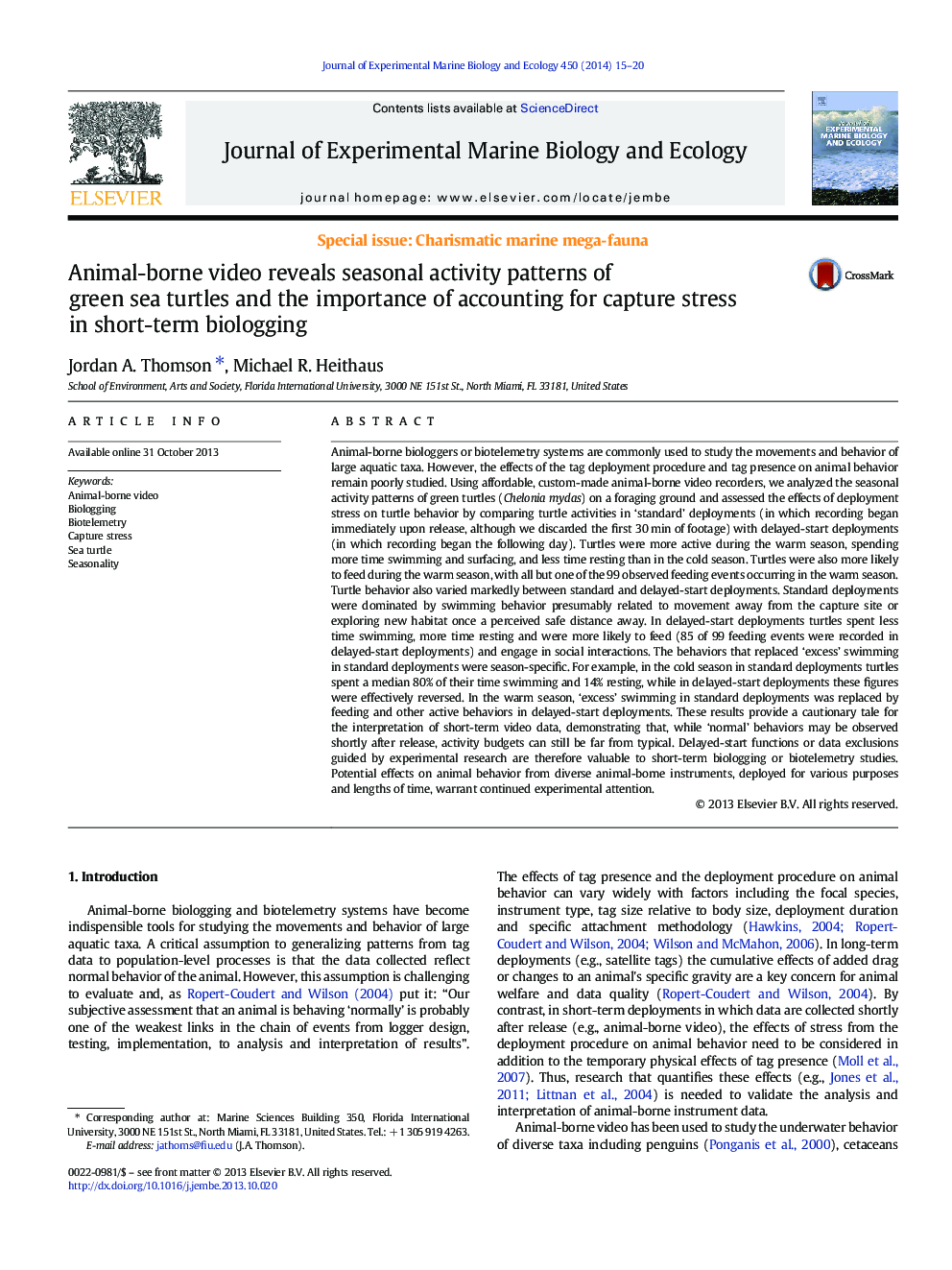| Article ID | Journal | Published Year | Pages | File Type |
|---|---|---|---|---|
| 4395606 | Journal of Experimental Marine Biology and Ecology | 2014 | 6 Pages |
•Animal-borne video tags recorded green turtle behavior on a feeding ground.•Turtles showed seasonal variation in activity patterns and feeding rates.•Capture stress had a strong influence on turtle activity budgets.•We urge caution when interpreting data logged shortly after tag deployment.
Animal-borne biologgers or biotelemetry systems are commonly used to study the movements and behavior of large aquatic taxa. However, the effects of the tag deployment procedure and tag presence on animal behavior remain poorly studied. Using affordable, custom-made animal-borne video recorders, we analyzed the seasonal activity patterns of green turtles (Chelonia mydas) on a foraging ground and assessed the effects of deployment stress on turtle behavior by comparing turtle activities in ‘standard’ deployments (in which recording began immediately upon release, although we discarded the first 30 min of footage) with delayed-start deployments (in which recording began the following day). Turtles were more active during the warm season, spending more time swimming and surfacing, and less time resting than in the cold season. Turtles were also more likely to feed during the warm season, with all but one of the 99 observed feeding events occurring in the warm season. Turtle behavior also varied markedly between standard and delayed-start deployments. Standard deployments were dominated by swimming behavior presumably related to movement away from the capture site or exploring new habitat once a perceived safe distance away. In delayed-start deployments turtles spent less time swimming, more time resting and were more likely to feed (85 of 99 feeding events were recorded in delayed-start deployments) and engage in social interactions. The behaviors that replaced ‘excess’ swimming in standard deployments were season-specific. For example, in the cold season in standard deployments turtles spent a median 80% of their time swimming and 14% resting, while in delayed-start deployments these figures were effectively reversed. In the warm season, ‘excess’ swimming in standard deployments was replaced by feeding and other active behaviors in delayed-start deployments. These results provide a cautionary tale for the interpretation of short-term video data, demonstrating that, while ‘normal’ behaviors may be observed shortly after release, activity budgets can still be far from typical. Delayed-start functions or data exclusions guided by experimental research are therefore valuable to short-term biologging or biotelemetry studies. Potential effects on animal behavior from diverse animal-borne instruments, deployed for various purposes and lengths of time, warrant continued experimental attention.
